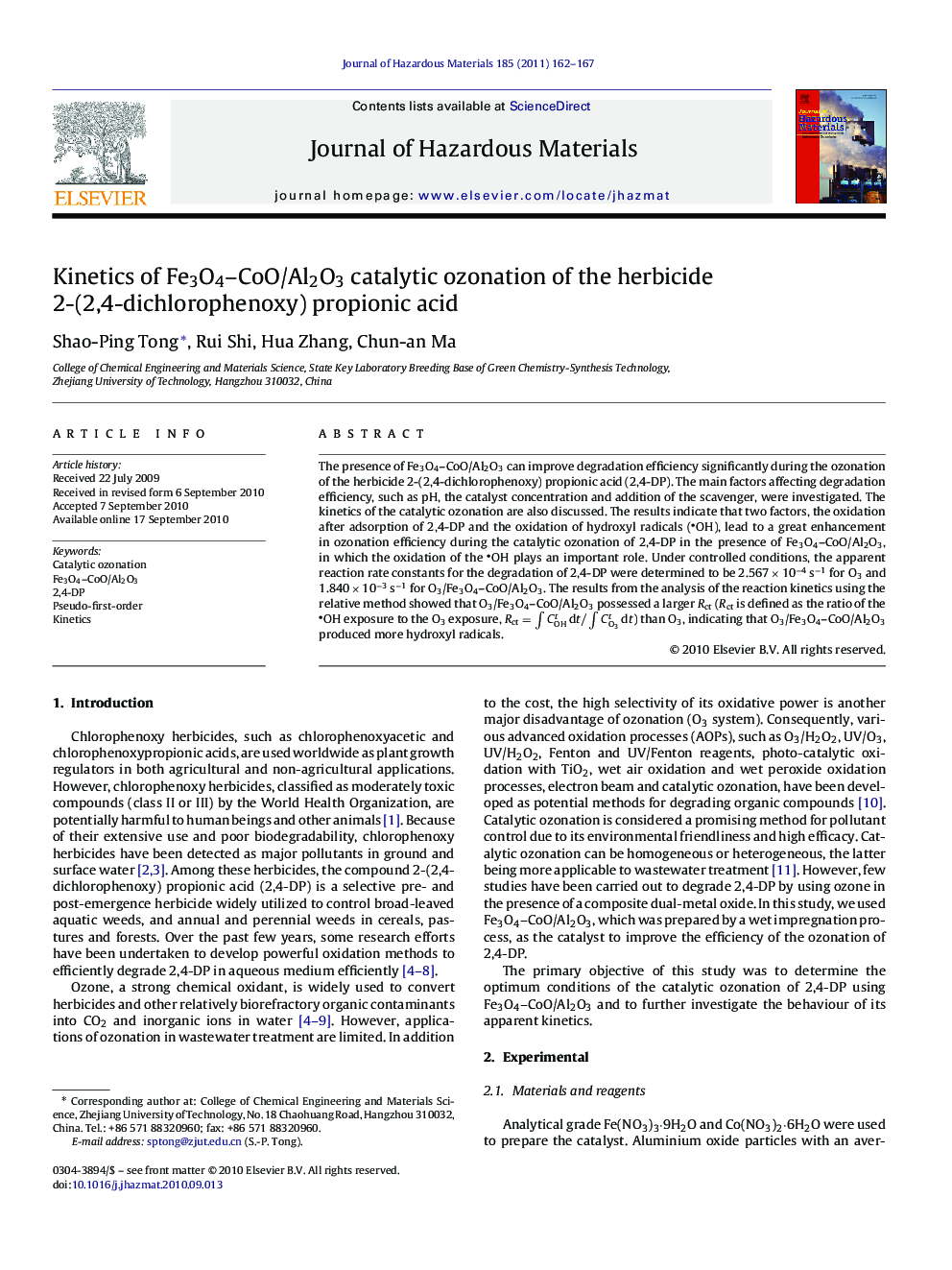| Article ID | Journal | Published Year | Pages | File Type |
|---|---|---|---|---|
| 579776 | Journal of Hazardous Materials | 2011 | 6 Pages |
Abstract
The presence of Fe3O4-CoO/Al2O3 can improve degradation efficiency significantly during the ozonation of the herbicide 2-(2,4-dichlorophenoxy) propionic acid (2,4-DP). The main factors affecting degradation efficiency, such as pH, the catalyst concentration and addition of the scavenger, were investigated. The kinetics of the catalytic ozonation are also discussed. The results indicate that two factors, the oxidation after adsorption of 2,4-DP and the oxidation of hydroxyl radicals (OH), lead to a great enhancement in ozonation efficiency during the catalytic ozonation of 2,4-DP in the presence of Fe3O4-CoO/Al2O3, in which the oxidation of the OH plays an important role. Under controlled conditions, the apparent reaction rate constants for the degradation of 2,4-DP were determined to be 2.567Â ÃÂ 10â4Â sâ1 for O3 and 1.840Â ÃÂ 10â3Â sâ1 for O3/Fe3O4-CoO/Al2O3. The results from the analysis of the reaction kinetics using the relative method showed that O3/Fe3O4-CoO/Al2O3 possessed a larger Rct (Rct is defined as the ratio of the OH exposure to the O3 exposure, Rct=â«COHtdt/â«CO3tdt) than O3, indicating that O3/Fe3O4-CoO/Al2O3 produced more hydroxyl radicals.
Related Topics
Physical Sciences and Engineering
Chemical Engineering
Chemical Health and Safety
Authors
Shao-Ping Tong, Rui Shi, Hua Zhang, Chun-an Ma,
